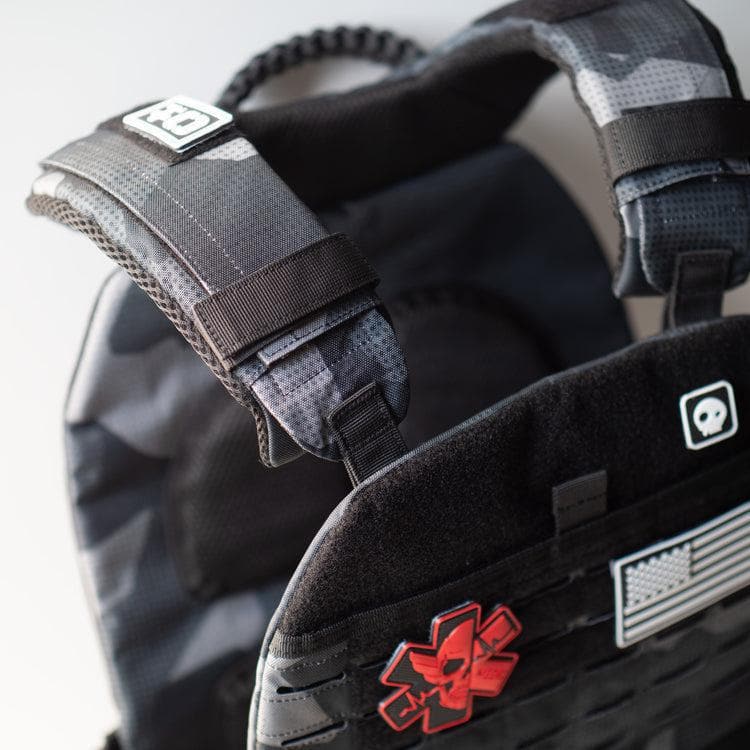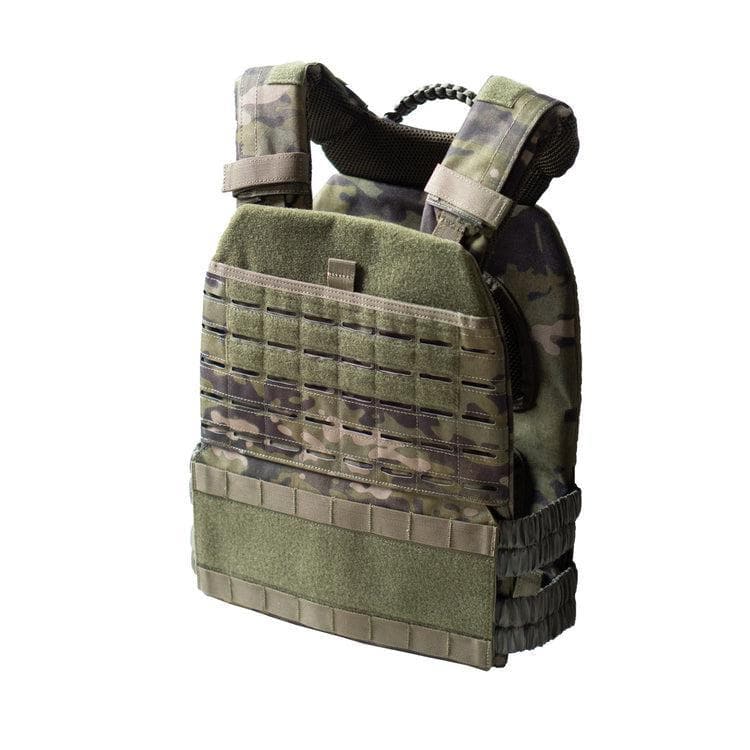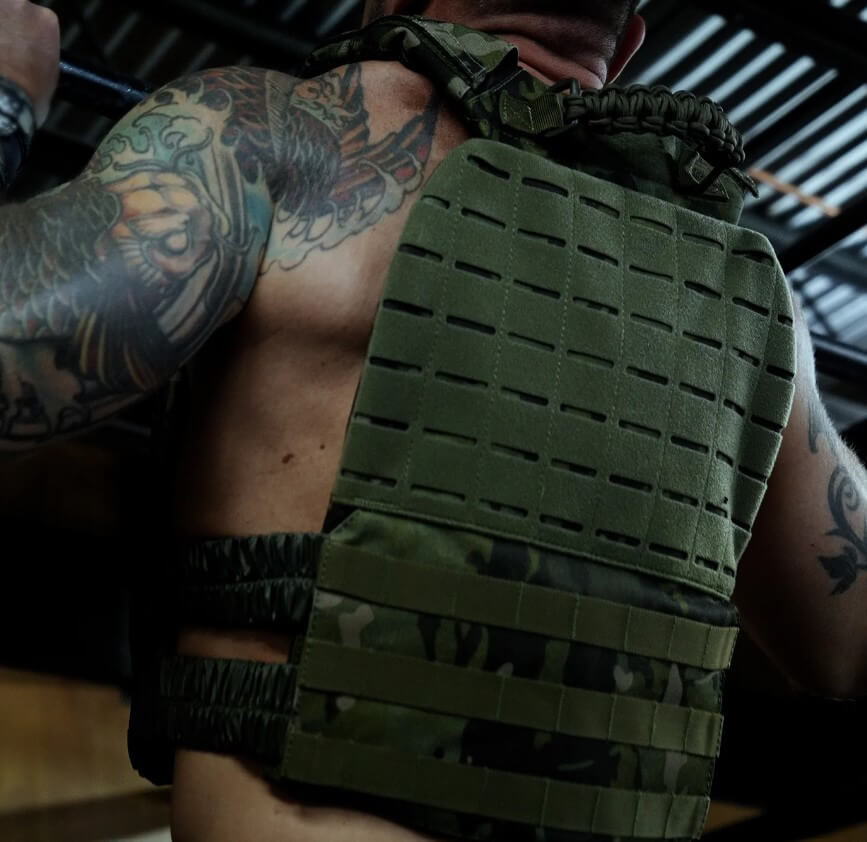While the addition of a weighted vest undoubtedly elevates exercise effectiveness, the journey to desired fitness goals necessitates a judicious choice of weight. This comprehensive guide delves into the intricacies, offering insights into the key factors that shape the decision-making process. From individual fitness levels to the specific workout objectives, the quest for the right weight becomes a crucial aspect of ensuring a harmonious and effective workout regimen. As we navigate the realm of weighted vests, this guide becomes a compass, directing enthusiasts toward a balanced and tailored approach that maximises benefits while prioritising safety and sustainable progress.
Purpose of Use
- Strength Training: For muscle development, a heavier vest can be more beneficial. The additional weight increases resistance, thereby intensifying muscle engagement. A heavier vest translates into increased resistance, triggering a more profound response from the muscles. This intensified engagement is particularly beneficial for compound movements like squats, lunges, and push-ups. The muscles, confronted with a greater load, adapt by growing stronger and more resilient. It's a dynamic interplay where the weighted vest becomes a catalyst, propelling strength training routines to new heights.
According to the American Council on Exercise (ACE), using a heavier weighted vest can lead to greater strength gains.
- Endurance Building: Endurance athletes might prefer a moderately heavy vest. This strategic choice ensures a continuous challenge without impeding the fluidity required for prolonged exercises. The moderate weight becomes a steadfast companion in the journey of endurance building, providing the resistance needed for sustained efforts without compromising the athlete's ability to push boundaries over extended durations.
- Weight Loss: For those focusing on weight loss, a lighter vest is recommended. This strategic choice aligns with findings from the Journal of Strength and Conditioning Research, indicating that a lighter vest enhances calorie burn without subjecting the body to excessive strain. The reduced load allows for sustained and efficient movement, making the lighter weighted vest a tailored companion for those aiming to shed pounds and embark on a calorie-burning journey with optimal safety and effectiveness.
User's Fitness Level
- Beginners: It's advisable to start with lighter weights, about 5% of body weight, to prevent injury and allow the body to adjust, as recommended by fitness experts.
- Experienced Users: Those with more experience can safely handle heavier vests, incrementally increasing the weight to continue challenging their muscles.
Safety Considerations
- Starting with a lower weight is crucial for safety. A study in the Journal of Sports Science & Medicine highlights the importance of gradually increasing the weight to avoid musculoskeletal injuries.
- It's essential to listen to your body and increase weight only when comfortable.
Percentage of Body Weight
The general guideline suggests starting with a vest weight that is 5-10% of the user's body weight. This strategic range offers a delicate equilibrium between effectiveness and safety, ensuring that the added resistance remains challenging without venturing into the realm of undue strain.
This percentage-based approach serves as a personalized compass, allowing individuals to tailor their vest selection to their unique physical capacities and goals. It acknowledges the diverse landscape of fitness enthusiasts, providing a scalable starting point that fosters a gradual and progressive integration of the weighted vest into their routines.
Adjustability
Adjustable vests are beneficial for gradual progression. The significance of adjustability in weight vests becomes evident when considering the principles of gradual progression in fitness. Adjustable vests stand as invaluable tools, empowering users to embark on their fitness journey with a lower weight and seamlessly scale up as their strength and endurance grow. This aligns harmoniously with the fundamental tenets of progressive overload, a cornerstone for achieving consistent and sustainable fitness improvements.
The ability to fine-tune the weight of the vest ensures that users can craft a fitness regimen that evolves alongside their capabilities. This adaptability is particularly advantageous for beginners, allowing them to initiate their weighted vest journey with a comfortable load and steadily increase it over time. As users embrace the flexibility offered by adjustable vests, they pave the way for a dynamic and personalized progression, where each incremental adjustment becomes a testament to their evolving strength and resilience.
Type of Exercise
Running and Walking
In the realm of cardiovascular exercises like running and walking, the weight of the vest plays a crucial role in minimizing joint stress while optimizing calorie burn. For these high-impact activities, a lighter vest is preferred.
Running and walking exert considerable stress on the joints, especially the knees and hips. Introducing a weighted vest amplifies this stress, making the selection of an appropriate weight a crucial consideration. Opting for a lighter vest is preferred in this context. The additional weight, though modest, imparts a noticeable increase in resistance, fostering an elevated heart rate and intensified muscle engagement without subjecting the joints to excessive strain.
The primary objective of incorporating a weighted vest into running or walking routines is to optimize calorie burn. A lighter vest achieves this by enhancing the metabolic demands of the activity without compromising joint integrity. The Journal of Strength and Conditioning Research supports this approach, emphasizing the benefits of a lighter vest during high-impact exercises to reduce the risk of injury.
The strategic use of a lighter vest ensures that the biomechanics of the natural stride remain relatively unaffected. This minimizes alterations in gait patterns, preserving the fluidity of movement. As users traverse their chosen terrain, be it a scenic jogging path or a brisk walk around the neighborhood, the weighted vest becomes a subtle yet effective tool in amplifying the cardiovascular benefits without introducing undue stress to the joints.
A comprehensive study published in the Journal of Strength and Conditioning Research aligns with this principle, advocating for the use of a lighter vest during high-impact exercises to mitigate the risk of injury. This approach allows individuals to enjoy the benefits of increased resistance without compromising the health of their joints, ensuring a safer and more sustainable cardio regimen.
Bodyweight Workouts
In the dynamic realm of bodyweight workouts, where the resistance originates solely from one's own mass, the introduction of a weighted vest becomes a game-changing strategy. Tailoring the weight of the vest to the specific demands of exercises like push-ups and squats holds the key to unlocking enhanced muscle engagement and fostering substantial strength development.
Push-Ups
For push-ups, a moderately heavy vest becomes a catalyst for intensifying the challenge. The added resistance during the upward phase of the push-up amplifies the workload on the chest, shoulders, and triceps. As the muscles adapt to this increased demand, strength gains become more pronounced. The weighted vest transforms a fundamental upper body exercise into a powerhouse of muscle engagement, paving the way for a sculpted and resilient upper torso.
Squats
In the realm of squats, the weighted vest serves as a strategic tool to elevate the intensity of this quintessential lower body exercise. The additional load enhances the demand on the quadriceps, hamstrings, and glutes, fostering a more profound engagement of these major muscle groups. This heightened muscle activation not only contributes to lower body strength development but also accelerates overall calorie burn, making squats with a moderately heavy vest a comprehensive approach to fitness.
The key advantage of a moderately heavy vest lies in its ability to provide balanced resistance. It challenges the muscles without compromising form or risking undue strain. This balanced resistance aligns with the principle of progressive overload, ensuring that muscles are consistently pushed beyond their accustomed limits, driving growth and development.
The versatility of a moderately heavy vest extends beyond specific exercises, allowing users to explore a myriad of bodyweight movements with added resistance. From lunges to burpees, the vest becomes a dynamic companion, transforming each movement into an opportunity for heightened muscle engagement and strength enhancement.
In essence, the weight of the vest in bodyweight workouts becomes a strategic lever, enabling enthusiasts to tailor their resistance levels with precision. As the vest becomes an integral part of push-ups, squats, and a myriad of bodyweight exercises, it emerges not just as a piece of equipment but as a sculptor's tool, moulding and refining the body's strength with each intentional movement.
Personal Comfort and Fit
The comfort and fit of the vest are paramount. A vest that fits poorly not only compromises the effectiveness of exercises but also poses the risk of discomfort and potential injury. The snug embrace of a well-fitted vest is instrumental, ensuring it becomes an extension of the body rather than an impediment to movement. Enthusiasts should meticulously assess the vest's fit, ensuring it contours to their physique, allowing them to navigate their workouts with seamless precision. As users prioritize personal comfort and fit, the weighted vest transforms into a tailored companion, harmonizing with each movement and fostering an environment where safety and effectiveness coexist.Expert Opinions and Studies
To gain a comprehensive understanding of the effective utilization of weighted vests, tapping into the wisdom of fitness experts and referencing studies from reputable sources becomes an invaluable compass. Insights from seasoned professionals and studies conducted by authoritative bodies such as the American Council on Exercise contribute to a nuanced perspective that extends beyond anecdotal accounts.
Dr. Sarah Matthews, Exercise Physiologist:
"Weighted vests are dynamic tools when used judiciously. For beginners, it's crucial to start light, allowing the body to adapt gradually. As an exercise physiologist, I often recommend incorporating the vest into brisk walks or bodyweight exercises. It's not just about resistance, it's about crafting a sustainable routine that promotes overall fitness without compromising joint health."
Dr. Sarah Matthews, with her background in exercise physiology, emphasizes a pragmatic and gradual approach. Her perspective underscores the importance of thoughtful integration, ensuring that the benefits of weighted vests are harnessed while prioritizing long-term joint health.
Coach Alex Hernandez, Strength and Conditioning Specialist:
"In the realm of strength training, weighted vests are game-changers. I frequently work with athletes who leverage vests for sports-specific enhancement. The key is strategic progression – starting with a weight that challenges but doesn't overwhelm, then progressively increasing. This approach cultivates strength that translates seamlessly to their sports performance."
Coach Alex Hernandez, a seasoned strength and conditioning specialist, brings a performance-oriented viewpoint. His expertise lies in tailoring weighted vest usage to sports-specific training, emphasizing the importance of systematic progression to unlock athletic potential.
Studies conducted by esteemed organizations, such as the American Council on Exercise, offer a scientific foundation to the practical application of weighted vests. These studies delve into aspects like the impact on calorie expenditure, muscle engagement, and potential risks associated with specific exercises. Referencing such research equips users with evidence-based knowledge, elevating their decision-making process and ensuring that their approach aligns with proven principles of fitness science.
FAQ’s
Q:Is walking with a weighted vest that weighs 15 kg too heavy for me?
A:Whether a 15kg weighted vest is too heavy for you depends on several factors including your body weight, fitness level, and experience with weighted training. Generally, it's recommended to start with a vest that is around 5-10% of your body weight, especially if you're new to using weighted vests. A 15kg vest is quite heavy, especially for walking, and could pose a risk of injury if you're not accustomed to such a load. It's important to start with a lighter weight and gradually increase as your strength and endurance improve. Always listen to your body and consider consulting a fitness professional to determine the most appropriate weight for your needs.
Q:Is running with a weighted vest bad
A:Running with a weighted vest can be both beneficial and risky, depending on various factors. It can increase exercise intensity, leading to improvements in strength and cardiovascular fitness. However, it also adds strain to the joints and muscles, which can increase the risk of injury, especially if the vest is too heavy or if the runner has existing joint or muscle issues. It's crucial to start with a light weight, focus on proper form, and gradually increase the weight as the body adapts. Consulting with a fitness professional is advisable to ensure safe practice.
Conclusion
Weighted vests are like a special tool in fitness that help make workouts more effective by adding extra weight. This guide helps you understand how to use weighted vests to reach your fitness goals, whether you want to build strength, improve endurance, or lose weight. It covers everything from choosing the right weight for your needs to using weighted vests in different types of workouts.
As users embark on cardiovascular pursuits and bodyweight workouts, the guide emphasizes the role of a lighter vest in minimizing joint stress and enhancing muscle engagement. Beyond weights and workouts, the guide underscores the significance of fit and comfort, ensuring that the weighted vest becomes an extension of the body. With insights from fitness experts and scientific anchoring, this guide stands as a beacon, guiding enthusiasts toward a balanced and intentional fitness journey, where strength, health, and resilience converge harmoniously.










